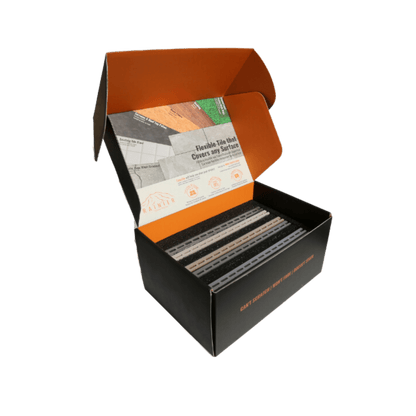Moss on paver stones can be an unsightly nuisance, making your outdoor spaces look neglected and dirty. Over time, moss can take hold in the crevices between the stones or on the surface itself, thriving in moist, shady areas. While moss isn’t harmful to the stones, it can be slippery and challenging to clean. If left untreated, it can create an unsafe surface and cause further damage to your paving over time. Fortunately, getting rid of moss on paver stones is a straightforward task if you know the right methods. Here’s a comprehensive guide to help you remove moss and prevent it from coming back.
Read more: How to put paver stone around the tree
Why Moss Grows on Paver Stones
Before tackling the moss, it's helpful to understand why it grows in the first place. Moss thrives in damp, shaded areas with poor drainage. If your paver stones are located in a spot that gets little sunlight and has water pooling between or around the stones, it creates the perfect environment for moss to grow. Moss can also develop if the pavers are old and have accumulated dirt, debris, or organic matter that retains moisture.
Additionally, if the pavers are set with little or no jointing sand, this can create spaces for moss spores to settle in and spread. These factors contribute to the persistence of moss growth, which means that the solution requires both cleaning and improving the conditions around your pavers.
Read more: How to Install Paver Stone Edging
Tools and Materials You’ll Need
Before getting started, gather the necessary tools and materials. These might include:
-
Broom or brush
-
Pressure washer (optional)
-
Moss killer or natural cleaning solution (vinegar, baking soda, or a mixture of water and bleach)
-
Gloves and safety goggles
-
Scraper or putty knife
-
Bucket for mixing solutions
-
Garden sprayer (if using a liquid solution)
-
Sand (optional, for refilling joints)
Read more: how to stack paver stones
Step-by-Step Process to Remove Moss from Paver Stones
1. Start with Dry Scraping
The first step in getting rid of moss is to remove as much of it as possible manually. Use a stiff broom or brush to scrub the surface of the pavers, focusing on the areas where moss has settled. A handheld scrub brush with stiff bristles is ideal for getting into the crevices between the stones. For tougher moss patches, you can use a scraper or putty knife to gently scrape the moss off the paver surface.
It’s important to do this step while the pavers are dry, as wet moss can stick harder to the surface and make removal more difficult.
Read more: how many paver stones to make a circle
2. Use a Pressure Washer (Optional)
If the moss is particularly stubborn or has deeply rooted itself between the stones, a pressure washer can help you power clean the surface. Set the pressure washer to a moderate setting to avoid damaging the pavers, and focus on the areas with visible moss growth. Hold the nozzle at a slight angle and at least 6 inches from the surface to avoid using too much force. The water pressure will help loosen the moss, grime, and debris from the pavers, making the surface look much cleaner.
Be sure to wash away any remaining moss from the joints as well. After pressure washing, let the surface dry completely before moving on to the next step.
Read more: How to Effectively Clean Paver Stones
3. Apply a Cleaning Solution
Once you’ve removed the bulk of the moss, it’s time to apply a cleaning solution to kill off any remaining spores and prevent the moss from growing back. There are several cleaning options you can choose from:
-
Vinegar Solution: Vinegar is a natural and effective solution to kill moss. Mix equal parts white vinegar and water in a spray bottle or bucket. Apply the mixture directly to the mossy areas, ensuring it soaks into the cracks and crevices. Let it sit for 30 minutes to an hour before scrubbing it off.
-
Baking Soda Solution: For a more eco-friendly option, mix 1/4 cup of baking soda with a gallon of warm water. Apply this solution to the paver stones using a sponge or cloth. Baking soda works by neutralizing the acidity of the moss, helping it break down.
-
Bleach Solution: If you’re dealing with persistent moss, a bleach solution is highly effective. Mix 1 part bleach with 10 parts water in a bucket or garden sprayer. Spray the solution onto the moss, making sure to cover it evenly. Let it sit for about 15-30 minutes before scrubbing away the moss. Be sure to wear gloves and goggles, as bleach can be harsh on the skin and eyes.
-
Commercial Moss Killer: If you prefer a ready-made solution, there are many commercial moss killers available on the market. These products are specifically designed to target moss and algae growth on pavers. Simply follow the manufacturer’s instructions to apply the product.
Read more: how to build stairs with paver stones
4. Scrub and Rinse
After allowing the solution to sit for the recommended time, use a stiff brush or broom to scrub the surface again. For areas between the stones, a wire brush or a smaller handheld scrub brush will help you reach the crevices more effectively.
Once you’ve scrubbed the moss, rinse the pavers thoroughly with water. If you used a bleach solution or any commercial product, it’s essential to wash away any residual chemicals, as they may affect surrounding plants or soil.
5. Dry and Inspect
Allow the pavers to dry completely before inspecting the area. This is important because some stubborn patches may still need further treatment. Once dry, check if any moss remains in the cracks or crevices. If necessary, repeat the cleaning and scrubbing process on those specific areas.
6. Refill Gaps and Improve Drainage
After you’ve successfully removed the moss, it’s important to prevent it from returning. One of the best ways to do this is by addressing the root cause of the problem: poor drainage and excess moisture.
If the joints between the pavers have loosened or if there is a lack of jointing sand, refill them with polymeric sand or regular sand. This will help reduce the moisture that moss thrives in and prevent new growth. Be sure to compact the sand into the joints and remove any excess.
Additionally, consider improving the drainage around your pavers. Ensure that the area slopes away from the pavers to avoid water pooling. You may also want to trim back any overhanging branches or bushes that provide shade and moisture to the area.
Read more: how to install paving stones in grass
Preventing Future Moss Growth
Once you’ve removed the moss, taking a few preventive measures can help keep it from coming back. Here are some tips:
-
Improve Sunlight Exposure: Moss thrives in shaded, damp areas. If possible, trim back trees and shrubs that block sunlight from reaching the paver stones. More sunlight will help dry out the surface and discourage moss growth.
-
Improve Drainage: Ensure proper drainage around the pavers by adding gravel or installing a drainage system. Proper drainage will prevent water from pooling and reduce the moisture that moss needs to thrive.
-
Regular Cleaning: Clean your paver stones regularly, especially in the spring and fall. Sweep away leaves, debris, and organic matter, which can hold moisture and promote moss growth.
-
Seal the Pavers: Consider applying a sealant to your paver stones. A good-quality sealant can help protect the surface from moisture and prevent moss from taking hold. Be sure to choose a sealant that is compatible with your type of pavers.
Removing moss from paver stones doesn’t have to be a difficult or time-consuming task. With the right tools and techniques, you can restore the beauty of your outdoor spaces and prevent moss from returning. Start with the manual removal of moss, use a cleaning solution to kill any remaining spores, and take steps to improve drainage and sunlight exposure. By following these simple steps, your paver stones will stay clean and moss-free for years to come.
Remember, the key to long-term success is prevention. By maintaining your pavers, you can reduce the conditions that moss loves, ensuring your outdoor areas stay safe and visually appealing.






